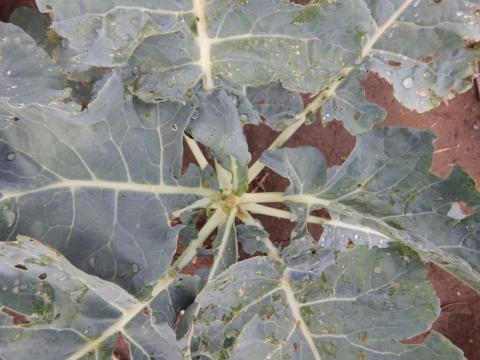New swede midge fact sheet available

Swede midge (Contarinia nasturtii) is a serious invasive pest of Brassica crops, including broccoli, cabbage and kale. Swede midge was first identified in the U.S. in New York in 2004. It is now present in northwestern VT and NH, western MA, and southern CT, and we expect that it will continue to move throughout the region. This pest is particularly troublesome for smaller-scale producers, particularly those that lack enough space for crop rotation.
The swede midge (Contarinia nasturtii) is a tiny fly whose larva feeds upon the growing points of plants in the Brassica family. This includes many crops, as well as many weed species. Of the Brassica crops, collards and broccoli are more susceptible than others, such as cabbage or Brussels sprouts. The symptoms are leaf puckering and scarring, and blind heads in the growing points, as is shown in the feature photo for this post (photo credit Elisabeth Hodgdon). They can be confused with mechanical injury, herbicide injury, and heat/cold stress. Some excellent photos of injury, and more information about this pest, can be found at these two sites:
- The Swede Midge – A Pest of Crucifer Crops, Ontario Ministry of Agriculture, Food & Rural Affairs
- Swede Midge Information Center for the U.S., Cornell University
Yolanda Chen’s lab at the University of Vermont is conducting research on organic management of swede midge. Elisabeth Hodgdon, a PhD student in the lab, suggests that crop rotation and insect exclusion netting may be somewhat effective ways to manage the pest. They have published a brand new fact sheet that describes the latest knowledge about organic management of this pest. This publication, entitled Organic Management of Swede Midge, is a collaborative effort by the University of Vermont, Cornell Cooperative Extension, and the University of Guelph.
It is very important to know that you have this pest in order to design an effective management plan. If you think you may have one of these pests, and would like us to investigate, please reach out to any member of the Vegetable and Fruit team, or to Piera Siegert, the NH State Entomologist (contact info here).